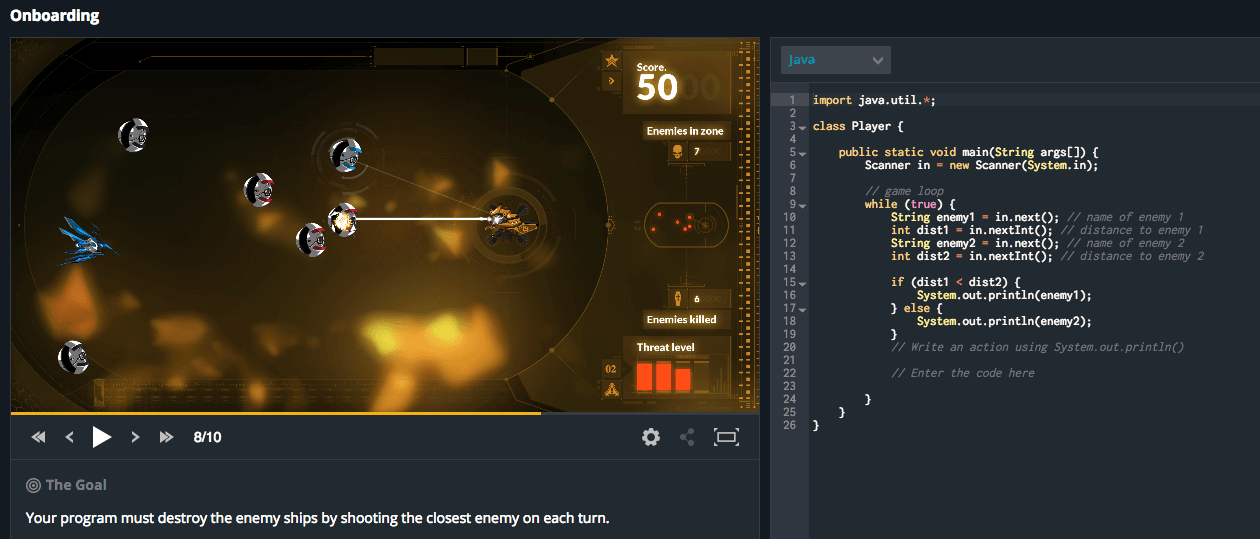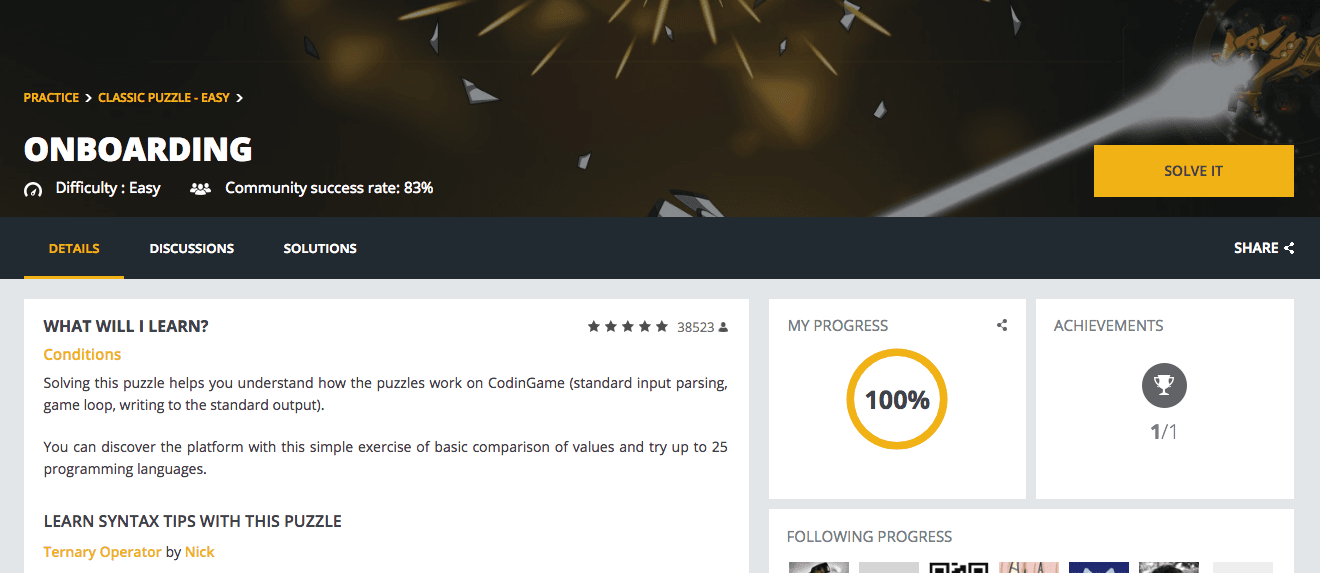One of the greatest challenges a professor faces when intending to teach computer science is to capture the attention of their students. Gamification as a means of learning to code while having fun is certainly one the best ways of doing so.
Today, tons of developers – beginner and experts alike – use CodinGame to hone their coding skills and have fun by solving programming puzzles. Each exercise is sorted by level of difficulty and is available in more than 25 different programming languages.
Because it is easier to learn to code by playing, we believe the CodinGame platform can also be a source of inspiration for teachers willing to diversify their computer science courses.
1st Course: Getting Started
We recommend using the “Onboarding” puzzle as a start for computer science students who don’t haven’t yet learned the basics of programming.
In this game, students are asked to write code for a space-cannon in order to neutralize oncoming waves of aliens. The cannon must be able to compare the distances of two advancing enemies and shoot the closest one first – and do so until no enemies are left.

Coding challenge: shoot the first asteroids based on distance
Once the code is written in the online editor, students can test it on different test cases as well as correct it with help from the debug mode and console output. The viewer enables students to watch in real-time how their code behaves.
Rundown of Notions to Learn
Computer Science teachers may thus bring their students, step by step, from logical reasoning to implementation and finish with a recap of acquired notions.
With just a 1-hour lesson, teachers can explain the concepts of:
- Variables
- Conditions & loops
- Standard input/output
in an entertaining way.

Learning conditions and more with a simple coding puzzle
We’ve built a simple guide to help teachers in the preparation of this 1-hour lesson.
Going Further: Having Fun Programming
More than just finishing an assignment, solving such a puzzle shows students they can achieve a lot with code.
To go even further, teachers also have the possibility of using the other puzzles of the CodinGame platform. They’re sorted by difficulty and programming tags. They can also create their own online course.
We demonstrated the possibilities of the platform it with the following two educational exercises:
- A bubble-sort exercise.
- A path-finding exercise to learn the basics of the Breadth-First Search algorithm.
Working with TEALS
TEALS is a non-profit organization leading a program to help high schools start a sustainable computer science program through partnerships between teachers and volunteer computer scientists teaching together in the classroom. Volunteers teach a CS class 2-3 mornings per week before going to work. They also help train a high school teacher from another discipline in computer science.
For the 2015-2016 school year, TEALS is working with 170 high schools across the US. It is looking for individuals with a computer science background (from college or industry) to sign up as volunteer CS teachers in a local high school.